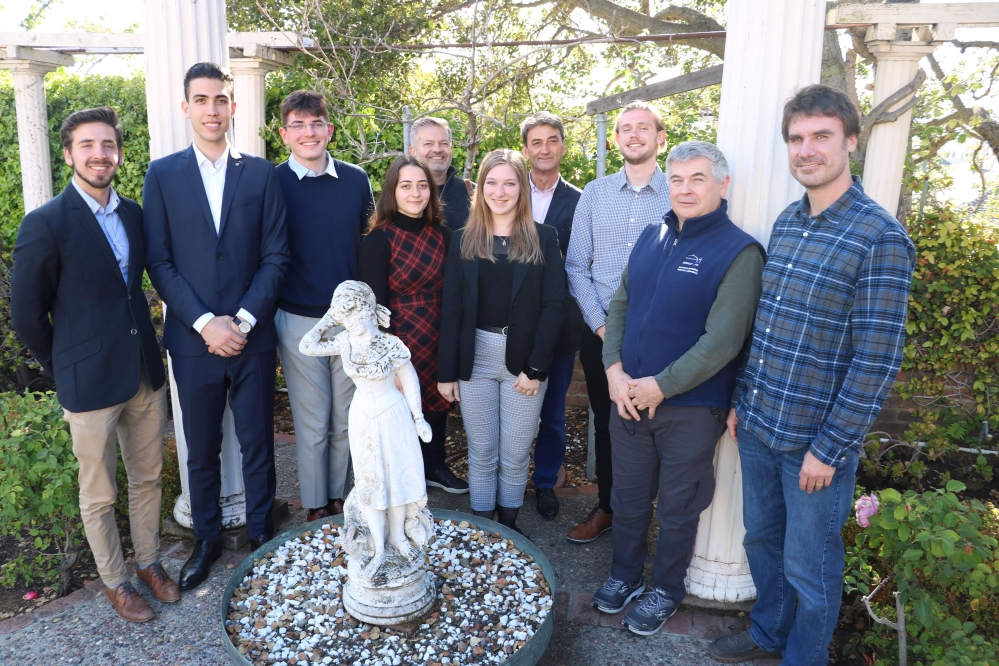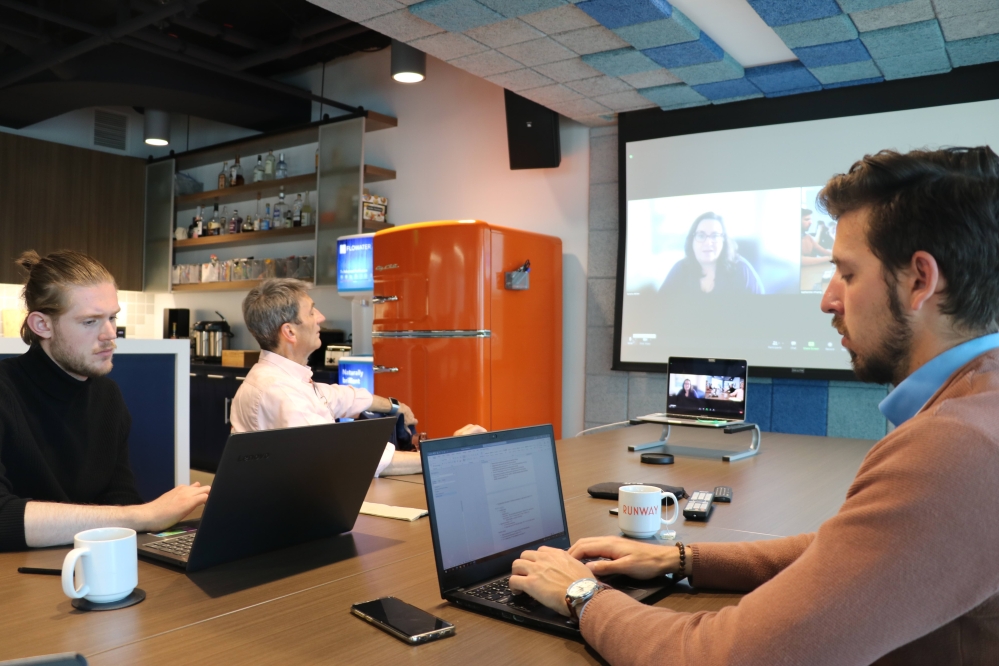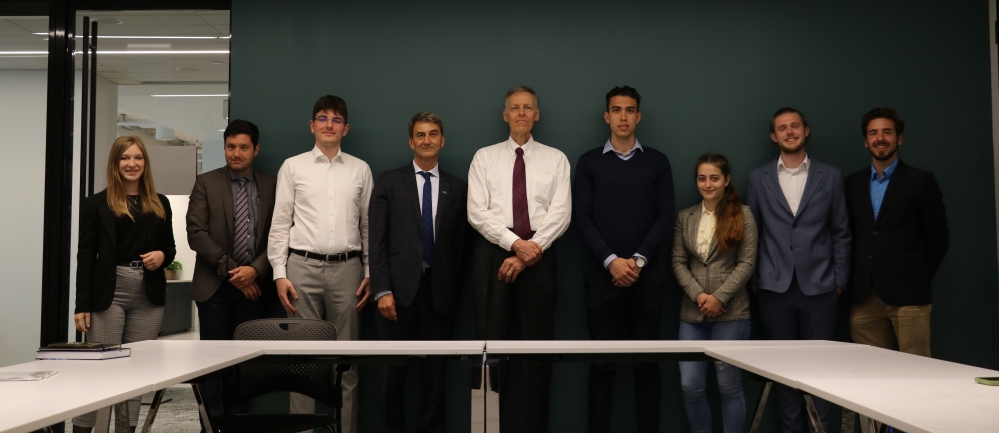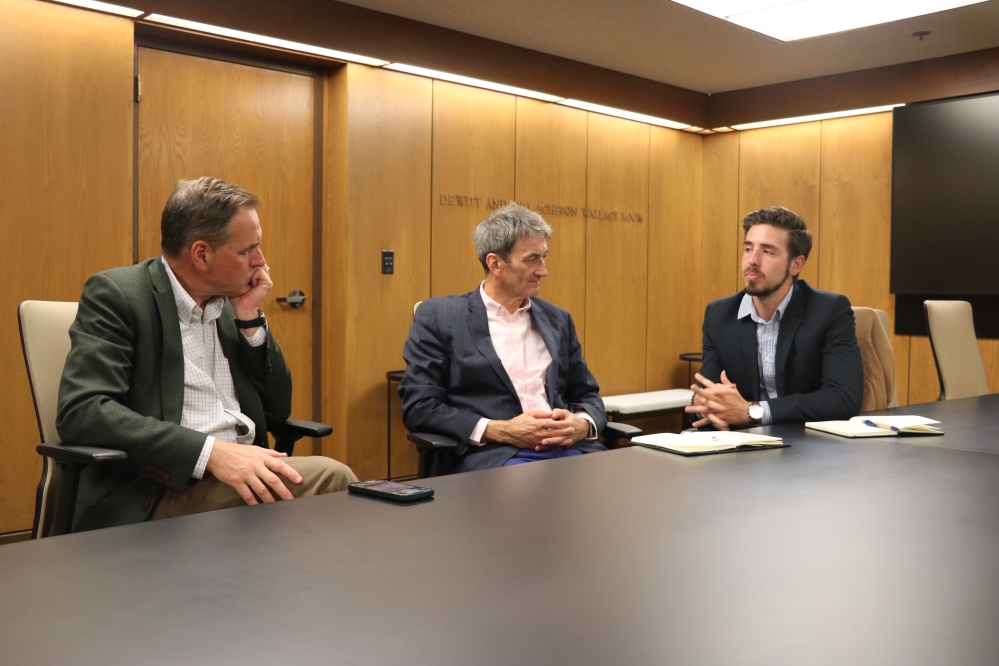Reading time: 6 minutes
There's no better place for startups to get their business off the ground and even gain global spotlight, but the sky-high cost of housing can put many off. What is the real secret to the success of this global tech hub? The destination of the students of Centre for Next Technological Futures was none other than the real big winner of the Covid crisis: Silicon Valley.
It was clear from the first day that Silicon Valley is not something you can simply find. But then where is it? Everyone had slightly different things to say about it. Some say it's somewhere between the 101 or the 280 freeway and San Francisco, others say it's south of San Francisco, but certainly not in one place. Silicon Valley is more of a network, it doesn't have a specific center. It's not really one or just a few big tech companies, it's actually a very complex ecosystem.The aim of the study tour was to explore the Silicon Valley ecosystem, visiting all the players who could shed new light on the secrets of success.
Rarely do students at the Centre for Next Technological Futures get the opportunity to spend an hour interviewing world-renowned British historian Niall Ferguson. The tour started with his insights at the Hoover Institution (Stanford University), where the students learned how talent, venture capital and a network of university research institutes have shaped Silicon Valley into the world's high-tech hub, why social inequality is growing in the region and what the race for technological supremacy between the US and China means. Ferguson also made no secret of the fact that, although Silicon Valley is where the technology of online education started, there is no substitute for the face-to-face exchanges that the students on the study tour were part of.
Investor agencies and support institutions are also important players in a startup ecosystem. On first hearing, the students at the Center for Next Technological Futures in San Francisco heard a strange contradiction from the heads of the investment agency GlobalSF - Darlene Chiu Brynat and Ludwika Alvarez - that the real big winner in the world-wide covid crisis is Silicon Valley. But when you consider how the world shifted into digital mode during the pandemic, it's easy to see why venture capital investment here in 2021 will break all previous records. In answering students' questions at GlobalSF, students also learned that Silicon Valley is successful not only because it attracts talent, technology and venture capital on a massive scale, but also because it can combine them in incredible variations to create new and marketable, or innovative, products.
During the trip, it became clear that Silicon Valley cannot function without top Hungarian professionals. The students had the opportunity to meet two success stories during their visit to Berkeley, hosted by the Örly Museum. Physicist Csaba Tóth, one of the research leaders of the Bella Lab, guided the students into the world of particle accelerators, while Gábor Szabó was asked about the development of Tesla's Autopilot, the current state of self-driving cars and the limitations of the development. During the discussion it became clear that this technology is still in its infancy and that the initial breakthroughs are basically due to the fact that everyone has reaped the "low-hanging fruit", but full self-driving mobility is still a long way off.
It's important to go back to the roots to understand where the world's leading innovation and technology hub started. When the students of the Center for Next Technological Futures in Palo Alto made a morning pilgrimage to the cradle of Silicon Valley, the Hewlett-Packard garage, where in 1938 two Stanford students took their professor's advice and started their own electronics company rather than join a large corporation, they hardly expected the garages to haunt them all day. Not only because they followed the path to Los Altos, where Steve Jobs and Steve Wozniak also cobbled together the first personal computer in a garage in 1975, but also because the history of Silicon Valley is inseparable from the new startups that spun out of spin-off companies, university research institutes or corporations. After the garages, the students went to San Jose City Hall with their experiences already prepared, where International Director Joseph Hedges presented the history of Silicon Valley in a nearly three-hour session, answering a host of questions. It turned out that people living in the San Francisco Bay Area are among the highest paid workers in the US, and productivity levels are much higher here than elsewhere. Despite this, those trying to start a business or relocate here are likely to be shocked by the cost of housing, which is also among the highest in the country.
Although the students are more concerned today with how to launch a successful startup, they listened intently to the thoughts of Zoltán Egyed, Google's Product Manager, at the company's campus in Mountain View. Startups, which are rapidly becoming global giants, are faced with the dilemma of innovators who can become prisoners of their past successes and need to develop their own internal structures to re-invent the company. Because new technological solutions come from new companies and startups, even if their founders are sometimes well into retirement. Vinod Bharadwaj, the founder of Tibaray, who spent decades studying particle physics at Stanford and has now founded a startup for its medical applications, discussing its business model with MCCs students in his own home. Similarly, startups are needed for smart cities, as the students in Menlo Park learned from one of the world's leading experts on the subject, Jonathan Reichental.
Not only did the students come to Silicon Valley to learn, but they also came to find opportunities to discuss their research. Thus, Professor Zoltán Cséfalvay presented the main elements of the project The Rise of Scaleup Cities in Europe at the Hungarian Science Club in San Mateo, Silicon Valley, while the students, together with the club members, analyzed the differences between the European and American startup ecosystems. This was complemented the next day in San Francisco by a roundtable discussion in which Sandra Miller, CEO of Runway Innovation Hub, described how promising startups are connecting with corporate investors. Then, at Berkeley, Mathieu Aguesse of the University's Center for Entrepreneurship and Technology, introduced the students to the Schoolab model, imported from France, which connects education, startups and big business by having students look for solutions to real business problems.




